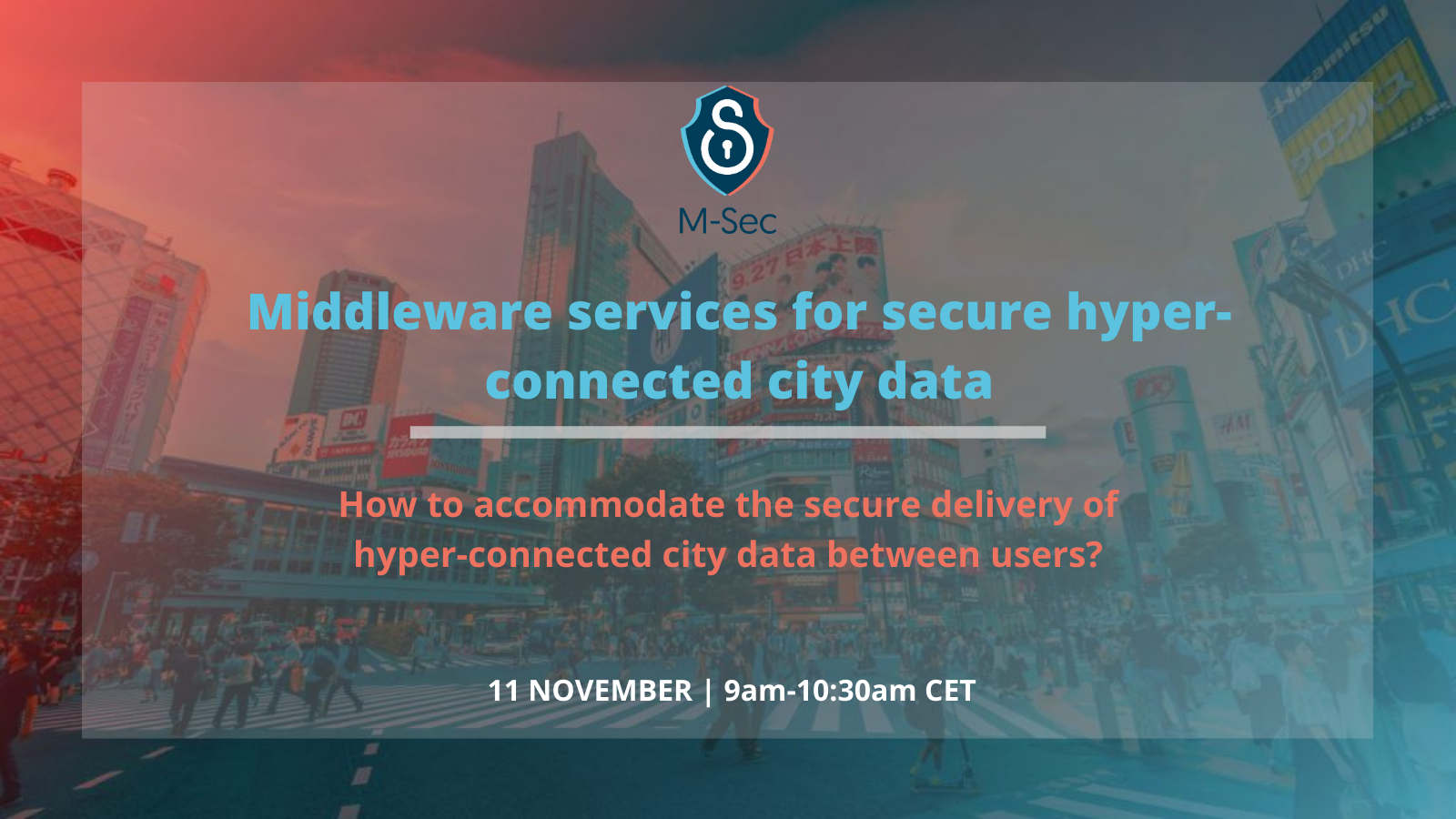Join us for M-Sec’s 2nd Webinar focused on how this innovative technological solution can help solve cybersecurity challenges in smart cities
How to accommodate the secure delivery of hyper-connected city data between users? In the scope of the M-Sec project, a highly talented team of researchers is building a middleware system for throughput city data streams, to overcome the limitations of other more centralized approaches of IoT architectures.
This will be the background for the 2nd Webinar of a series of Webinars that will showcase the project’s results, after two years of intensive research on how the M-Sec architecture could better solve cybersecurity challenges in hyper-connected smart cities, and it will be dedicated to the middleware layer of the M-Sec solution.
What is the importance of the middleware layer in the scope of the M-Sec solution? According to Jin Nakazawa, Professor at Keio University, “the middleware layer connects IoT devices i.e. the data providers, and applications i.e. the data consumers. It implements the basis blocks for connectivity, service abstraction, device management, virtualization, and remote accessâ€. Therefore, the middleware layer “provides IoT devices and applications with IoT data transfer in a scalable and secure manner. The role of this layer is to enable them to communicate to one anotherâ€.
In what way improvements in the middleware layer of the M-Sec solution will improve peoples’ lives in hyper-connected smart cities? For Jin Nakazawa, “secure middleware systems in the M-Sec solution guarantees authenticity of IoT data that is critical for people to make proper decisions on their behaviour. Such authentic IoT data will be exchanged via this layer and provided to people by a range of smart city services, including those for human health, safety, convenience, etc.â€.
In this engaging Webinar, our experts Levent Gurgen, from CEA, Antonis Litke, from ICCS, and Jin Nakazawa, from Keio University, will present fact-based objective information on their research on innovative ways to integrate all security levels of the M-Sec solution, by providing a basic set of services (e.g. lifecycle management, service level agreements monitoring, …). CEA’s sensiNact platform and Keio’s SOX platform will be presented as examples of this integration.
What were the major challenges and future developments regarding the middleware layer of the M-Sec solution? For Jin Nakazawa, the major challenge in this layer is to “transfer the data securely from one end (i.e. the IoT device side), through the cloud system, to the application side. The IoT marketplace, sensiNact gateway, and end-to-end security mechanism have addressed this challengeâ€. Therefore, “the middleware layer will test innovative methods to increase its security while at the same time it is scalable to let it grow by the hand of future advances to cope with new functional and non-functional requirements raised by new demands for hyper-connected smart city devicesâ€.
The Webinar, entitled “Middleware services for secure hyper-connected city dataâ€, will be held on the 11th of November, between 09:00am and 10:30am CET (Brussels Time), free of charge, through the following link: https://us02web.zoom.us/j/81659964569.
Your opinion matters! Our experts would like to introduce the state-of-the-art on middleware systems for hyper-connected smart city services. They are thus seeking feedback from different stakeholders and future collaboration with them to continue with this development.


